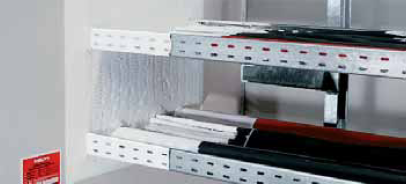Do You Have A Project We Can Help With?
Fire Protection
Active Fire Protection vs Passive Fire Protection
 Many people tend to view Active Fire Protection and Passive Fire Protection as competing products when they are actually complimentary. To understand this better, let’s examine the differences between the two.
Many people tend to view Active Fire Protection and Passive Fire Protection as competing products when they are actually complimentary. To understand this better, let’s examine the differences between the two.
Active Fire Protection involves products such as Fire Detection Systems and Fire Suppression systems which not only detect the fire but also suppress it until the Fire Service arrive.
On the other hand, Passive Fire Protection utilises products such as Firestopping, Intumescent Seals and Boards to maintain the integrity of the room or enhanced by the installation of the these products. This ensures that if a fire does occur that it is contained for a set period of time or in some cases protects the integrity of the structure such as structural steel work protection.
Having one form of protection without the other compromises the overall level of coverage. For instance if a room is fitted with Active Fire Protection using Fire Detection and Suppression the fire would be detected and suppressed, but it could re-ignite again if the integrity of the room has not been maintained using Passive Fire Protection products. Designers forget or don’t realise that any air gaps in the infrastructure of the room will allow not just the gas to escape but also oxygen to re-enter the room. Poorly fitting boards, entry points for cable and pipes as well as poor fitting doors and windows all contribute to a leaky room.
On the other hand, relying solely on Passive Fire Protection, a fire will be contained for the period of time specified but the damage to the room and it’s contents will be substantial. If the equipment in the room is of high value (not just monetary high value) such as data then the detrimental effect on the business would be quite dramatic. The protection of life will have been maintained but the protection of the assets especially within the room will have been destroyed.
Therefore, it is essential to have both Active Fire Protection where needed and Passive Fire Protection.
Concept Fire Suppression Ltd offer Passive Fire Protection services only where there is a Fire Suppression & Detection fitted within the room. After completing a room a Room Integrity Test is carried to check how well sealed the room is to hold the gas for a minimum concentration for at least 10 minutes. This test checks how leaky the room is and many builders and fit-out contractors then struggle to get the room to pass this test. We have therefore partnered with Passive Fire Protection Engineers who will get the room to pass using approved products and we then guarantee that the room will pass the Room Integrity Test.

